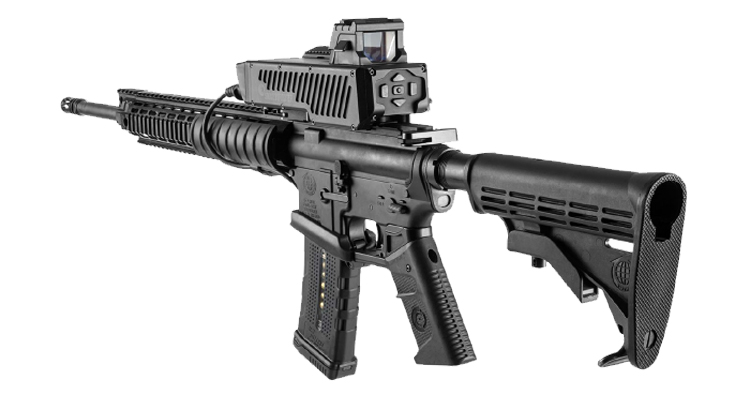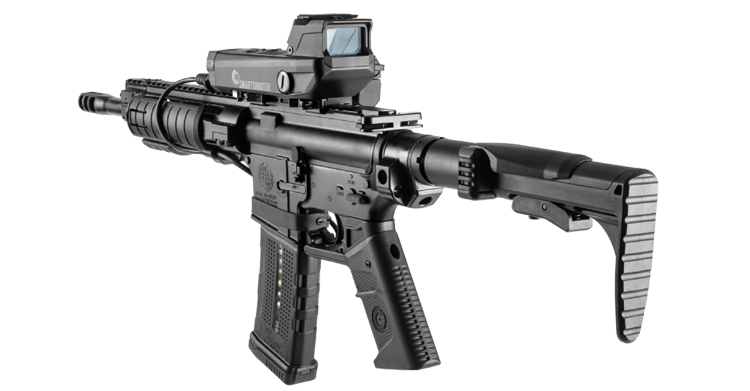INDIAN ARMED FORCES CHIEFS ON OUR RELENTLESS AND FOCUSED PUBLISHING EFFORTS

The insightful articles, inspiring narrations and analytical perspectives presented by the Editorial Team, establish an alluring connect with the reader. My compliments and best wishes to SP Guide Publications.

"Over the past 60 years, the growth of SP Guide Publications has mirrored the rising stature of Indian Navy. Its well-researched and informative magazines on Defence and Aerospace sector have served to shape an educated opinion of our military personnel, policy makers and the public alike. I wish SP's Publication team continued success, fair winds and following seas in all future endeavour!"

Since, its inception in 1964, SP Guide Publications has consistently demonstrated commitment to high-quality journalism in the aerospace and defence sectors, earning a well-deserved reputation as Asia's largest media house in this domain. I wish SP Guide Publications continued success in its pursuit of excellence.
- Operation Sindoor: Resolute yet Restrained
- India’s Operation Sindoor Sends a Clear Message to Terror and the World – ‘ZERO TOLERANCE’
- Japan and India set forth a defence cooperation consultancy framework, talks on tank and jet engines
- Terrorist Attack in Pahalgam in Kashmir: Unfolding a long surgical war against PAK
- Lt General Pratik Sharma takes over Command of Indian Army's Northern Command
SMASH Anti-Drone Weapon Sight
The SMASH 2000L/3000 is the lightest handheld operated fire control system using artificial intelligence, computer vision, and advanced algorithms making it an ideal hard-kill solution against drones and small UAS
 |
The Author is Former Director General of Information Systems and A Special Forces Veteran, Indian Army |

News reports of December 8, 2020 revealed that the Indian Navy had gone in for an unspecified number of Israeli, cutting-edge fire control systems that tackle drone threats from close range besides improving a soldier’s accuracy and speed of hitting targets – the SMASH 2000 Plus system. The contract called for the supply of Smart Shooter’s SMASH 2000 Plus fire control systems, which would be installed mainly on AK-47 and AK-203 rifles. SMASH is a kind of electro-optic sight system. It was also reported that the Army and the Border Security Force (BSF) were also in talks with the Israeli firm Smart Shooter for possible procurements.
Recent media reports indicate that the US Army and the US Marine Corps have purchased variants of the SMASH 2000 computerised optical sight systems from Israel for counter-drone role in limited numbers. SMASH 2000L sights, with the ‘L’ standing for ‘light’, are designed for use on a variety of small arms to facilitate more accurate target engagement; basically shooting objects with computer-aided precision. Smart Shooter is marketing its newest sight to non-US military customers as the SMASH 3000; which is referred to as SMASH 2000L/3000 to avoid confusion.
Smart Shooter is marketing its newest sight to non-US military customers as the SMASH 3000; which is referred to as SMASH 2000L/3000 to avoid confusion
A statement release by Smart Shooter says that the systems would be deployed specifically as part of the US Army’s counter small unmanned aerial systems (C-sUAS) defence strategy, which Smart Shooter had been testing with the Marine Corps using SMASH 2000 sights since 2021. When SMASH first appeared with US special operations units in Syria in June 2020, what looked to be similar evaluations of the earlier system were also being conducted.
The US Special Operations Command (SOCOM) has also hired Smart Shooter to develop a separate computerised small arms sighting system called the Individual Weapon Overmatch Optic (IWOO). The IWOO system automatically detects, highlights, and tracks potential targets, including drones, using a see-through display, which enhances the user’s situational awareness. Built-in fire control processing continuously calculates the optimal firing solution to provide the user with clear, discreet guidance, firing only with the best chance of neutralising the target. The IWOO system is to be tried by the US SOCOM. The SMASH 2000 system also takes into account the movements of the shooter themselves, including involuntary motion due to fatigue or stress, something that should be carried over to the IWOO. The earlier system can also be configured in such a way that the trigger of the weapon it is attached to, cannot fire until the crosshairs on the sight's display line up with the designated point of impact. This helps reduce the risk of accidentally shooting at innocent by standers in the heat of the moment.
The potential use of drones in a terrorist incident or attack against a critical infrastructure and soft targets has increased exponentially as the availability of drone technology becomes more widespread globally
The SMASH 2000L/3000 is the lightest handheld operated fire control system using artificial intelligence, computer vision, and advanced algorithms, maximising force lethality, operational effectiveness, and situational awareness throughout every engagement, both by day and night, making it an ideal hard-kill solution against drones and small UAS. Its rechargeable smart lithium-ion battery pack allows SMASH 2000L/3000 up to 72 hours of use or equaling to about 3,600 SMASH-assisted shots.

According to the South Asia Terrorism Portal (SATP), 79 terrorist/extremist groups are proscribed in India, 76 terrorist/extremist groups are “active” in India, 107 terrorist/extremist groups are inactive and 18 groups/conglomerates are in peace talks/ceasefire with the state or central authorities. This provides a huge asymmetric battlefield to be exploited by forces inimical to India, both external and internal. India is in the crosshair of many terrorist organisations, some of them being state-sponsored by countries like Pakistan. The geostrategic dynamics point to not only China but the Western intent also to destabilise India, the US included to tame India to its liking and check India’s growth.
The potential use of drones in a terrorist incident or attack against a critical infrastructure and soft targets has increased exponentially as the availability of drone technology becomes more widespread globally. The proliferation of drone production has lowered their costs and with their potential applications continuing to expand, instances of terrorist attacks using drones are set to increase. Recent examples include terrorist groups using drones in surveillance activities and delivering chemical, biological, radiological, nuclear and explosive materials in conflict zones, and an environmental group which repurposed a hobby drone to enter the secure airspace of a nuclear site and crash into a building highlights the current reality of the threat posed by the illicit use of drones.
The threat of terror-drone attacks in India is not along the borders alone but also in the hinterland. Not only the Armed Forces and the BSF, but also the police forces would need to be suitably equipped with counter-UAS systems.
The threat of terror-drone attacks in India is all pervasive; not along the borders alone but also in the hinterland. This indicates that not only the Armed Forces and the BSF, but also other Central Armed Police Forces (CAPF) and police forces would need to be suitably equipped with counter-UAS systems. Rather than individual services procuring these, a national-level assessment would be prudent to arrive at the overall requirements, which may be larger and can be catered to in phased manner.
We need to examine producing the SMASH 2000L/3000 systems under ‘Make in India’ in collaboration with Israel, which could also help boost exports. Concurrently, equipping our Special Forces with the IWOO version of the SMASH system compatible with their assault rifles (Tavor in the case of Arm) should be taken up. With a host of startups in India, indigenous development of similar counter UAS systems must also be explored.





